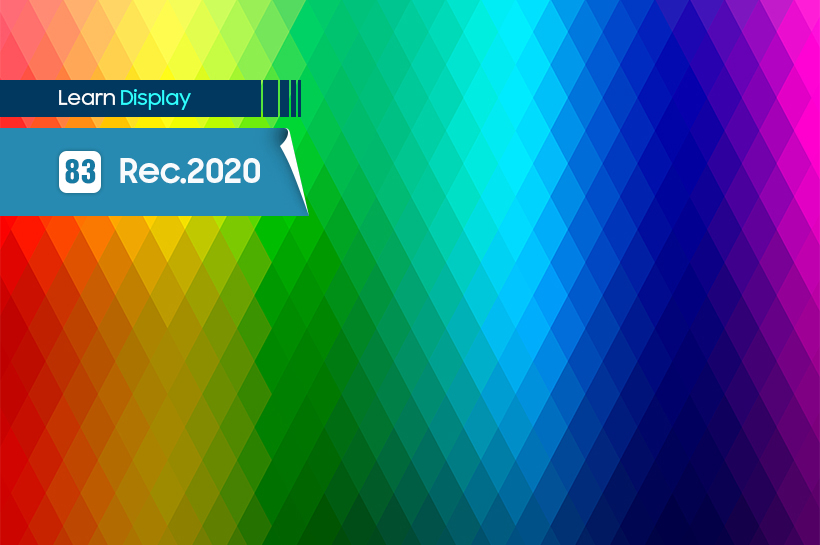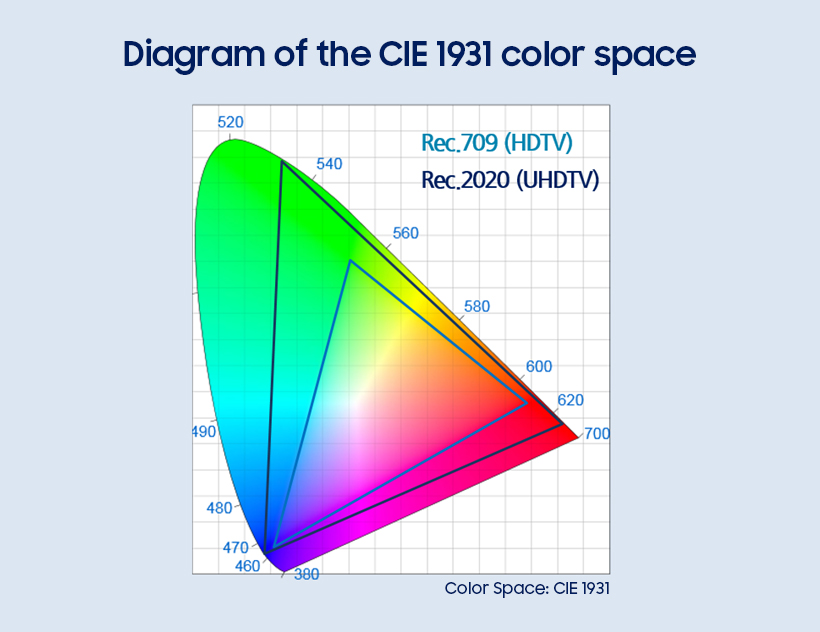
‘Rec.2020’ is the standard that covers aspects of video broadcasting established by the International Telecommunication Union (ITU). It is an abbreviated form of ‘ITU-R Recommendation BT*.2020’ and is also referred to as ‘BT.2020.’
*BT: Broadcasting service (Television)
Color gamut specifications have to be met for both the content and the display in order to reproduce intended colors on screen. The closest analogy would be playing sports with specific rules in a physical environment that meets those requirements.
A display's color gamut describes a specific range of colors that it can produce under specifications just like a sports stadium built with certain capacity and considerations. Color space within the color gamut is defined by different institutes and companies, and Rec.2020 is one of the most frequently used sets of specifications for ultra-high-definition television (UHDTV) color space.

※ CIE 1931: The most widely-used, traditional set of specifications for color space introduced by the french organization Commission Internationale de l’éclairage (CIE) in 1931. The rainbow-like chromaticity diagram indicates the visible spectrum of light.
Established in 2012, Rec.2020 expanded the color space of the conventional standard of 1990 (ITU-R BT.709) used for high-definition television (HDTV) and enhanced the resolution and color depth.
Rec.2020 supports UHD resolution of 4K (3840×2160 pixels) and 8K (7680×4320 pixels), which have been advanced from the resolution of HDTV (1920 x 1080 pixels), defined by Rec(BT).709. Rec.2020 has up to 12-bit color depth* support (68 billion colors).
*Color depth measures the number of varying shades of the same color that can be expressed based on the level of saturation



